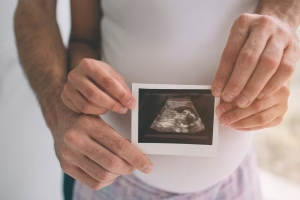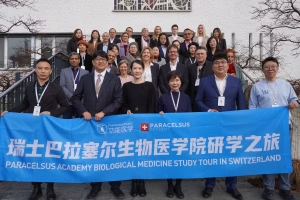Biological dentistry recognizes the close connection between oral health and general well-being. Chronic diseases are often either directly or partially related to oral problems. Many important dental issues that are usually overlooked have an impact on overall health, such as toxicity, inflammation, microbiome imbalance, meridians and, most importantly, the connection between the jaw, skull and bite.
A human newborn is born without teeth. Gradually, the teeth develop and accompany the individual through various stages of life until it reaches a point where it can feed itself. Apart from simply chewing food, our teeth fulfill some very important functions, which are discussed in this newsletter. The focus is on the connections between the jaw, bite and skull with symptoms such as headaches, joint pain, sleep disorders, etc.
Teeth are metabolically active structures
The teeth are the hardest structure of the body and develop from two of three embryological layers: the ectoderm and the mesoderm. The teeth therefore serve as a link between these two germ layers and should be considered in conjunction with them. Tooth enamel originates from the ectoderm, the same layer from which skin, hair and nails develop. Dentin, dental nerve, dental cementum and alveolar bone originate from the ectodermal mesenchyme, which emerges from the mesoderm. The mesoderm forms connective tissue, muscles, blood vessels and other structures.
And there is another special feature: the body has spared no expense or effort to create an additional germ layer, a kind of “fourth germ layer” especially for the oral cavity. These are cells of ectomesodermal origin that originate directly from the neural crest and are referred to as neural crest-derived stem cells (NCSC).
From the development of the first tooth to the age of 3, the child has 20 fully developed milk teeth. Between the 6. and From the age of 7, teeth slowly begin to be replaced by permanent teeth; a process that will continue until the age of 21 to form molars and a full set of 32 teeth. The tongue and chewing muscles are involved in ensuring that the growth of the jaw goes hand in hand with the eruption of the teeth.
Looking at this innate process, it took our body more than 20 years to ultimately create 32 metabolically active structures.
Jaw muscles, tendons and cranial nerves
Imbalances or tension in the jaw can have far-reaching effects, affecting muscles, nerves and the flow of energy in the head and neck, resulting in headaches, joint pain, sleep disorders, dizziness, muscle tension, ear pain (tinnitus), etc. This makes sense when you consider that the force involved in chewing requires a compensatory skeletal-nerve-muscle balance for the subsequent coordination to be successful.
The anatomy of jaw movement, i.e. the movement of the lower jaw (mandible) towards the upper jaw (maxilla), requires many muscles, many tendons and several different nerves. These muscles help to raise, lower, extend and retract the jaw and enable lateral movement. A very special joint is involved, the temporomandibular joint (TMJ). This joint connects the jaw to the skull, and problems with the connection to the neck can affect the cranial nerves, facial structures and the posture of the entire body. The harmonious movement between the teeth and the bones of the cervical spine is controlled by the occlusion, the function of the bite. It is obvious that the ease of jaw movement and the symmetry of the tooth-on-tooth position can be influenced by many factors, e.g. trauma (sports, whiplash, other), diseases such as caries and periodontitis (viral or bacterial), tooth loss, previous dental treatment or incorrect posture. Therefore, it is crucial that dentists and doctors work together to find out the causes of many health problems that we would never suspect are related to oral health.
Neuro-muscular connection
You may have noticed that the other person’s lower jaw deviates from the center to the right or left while they are speaking. This can be reinforced if you politely ask someone to open and close their mouth to assess the chin deviation. Or you may notice that a person cannot open their mouth very well, especially during a conversation, because they feel tension in the joint or some kind of restriction. Given these challenges, and especially if they are experiencing discomfort, they may try many different therapies, such as chiropractic or osteopathic manipulation, cranio-sacral therapy, perhaps Rolfing, acupuncture or neural therapy to find relief. These therapies offer good support, but they rarely address the actual cause, namely the incorrect bite, which can only be treated by a dentist.
My colleague Prof. Dr. Tilman Fritsch gives two reasons for using a dental splint and its influence on the neuro-muscular connection that the teeth trigger with every chewing process.
Prof. Dr. Tilman Fritsch on the neuro-muscular connection of the teeth:
Chewing and swallowing are highly complex processes that are controlled by reflexes but follow certain patterns. These patterns are controlled by the teeth and their bite, especially how they harmonize with each other. The teeth fulfill a variety of functions. Although grinding food is one of their tasks, it is the least used activity during the day. On average, the teeth are in contact for less than 20 minutes a day when chewing, while the rest of the day and at night they fulfill a variety of other functions.
Stress or misalignment of the jaw
One of these functions is that the teeth store data in their alignment, which they pass on to the brain when they come into contact. They play a role in controlling the posture and function of the entire body and act as tactile tools embedded in a sea of receptors within the dental arch. This makes it clear that a misalignment or disharmony of the bite has a profound effect on posture and function as well as on the metabolism, which creates stress for the entire organism.
Dental splints essentially have two functions: They compensate for misalignment and help to find an optimal bite via proprioception.
A night splint ensures a relaxed state during sleep by relaxing the muscles, tendons and supporting structures in the jaw area. Although it may take some time to optimize your bite, a more relaxed bite can essentially help alleviate teeth grinding (bruxism), headaches, joint pain, sleep disorders, dizziness and a host of other symptoms that over-the-counter painkillers often fail to provide lasting relief.
Teeth grinding can therefore be triggered by various factors, including stress, but also by a misalignment of the jaw. Biological dentistry at the Paracelsus Clinic specializes in recognizing the complex relationships between physiology, neurobiology and structural imbalances and their influence on overall health.
Paracelsus Clinic therapeutic approach
For symptoms such as neck pain, headaches, tinnitus, unexplained musculoskeletal complaints, etc., it can be helpful to visit the Paracelsus Clinic. Here, a coordinated partnership between patient, biological dentist and biological doctor can contribute to symptom relief. Our experience shows that a comprehensive approach offers our patients the best solution in the short and long term.
We use the following facets in combination with biological dentistry and medicine:
1. biological medicine and milieu therapy
At the beginning of biological medicine and milieu therapy, the focus is on detoxifying the body, balancing acidity, restoring intestinal health and supporting liver detoxification. It is important that the body can restore its self-regulation, regeneration and healing. However, as part of supporting detoxification and self-healing, it is important to consider the innate benefits of a healthy oral cavity, including the oral microbiota, for optimal health.
2. correction of muscular misalignments and neuronal dysregulations
At the same time, our therapies focus on correcting muscular misalignments and neural dysregulation using approaches such as osteopathy, myoreflex therapy and neural therapy.
Bite splints and adjustment therapies are repeated until posture is restored as skeletal balance.
3. reduction and control of psychosocial stress
The reduction and control of psychosocial stress plays a central role, integrating practices such as autogenic training, rebalancing the autonomic nervous system with mind-body medicine and psychokinesiology therapies. We often relieve stress in the jaw and stress in the mouth means stress for the whole body.
4. elimination of flocks/interference fields
The most important step will be to go back to the biological dentist. The careful removal of foci/interference fields from the oral cavity includes considerations such as the removal of toxins such as metals or plastics, the treatment of dead or inflamed teeth, the treatment of chronic bone inflammation and silent inflammation in soft and hard tissue. Of particular importance is the harmonious and dynamic interplay between the active chewing function and the dynamics of the musculoskeletal system.
A definitive tooth restoration is therefore only considered after all other measures have been completed, whereby myocentric criteria are observed and metal-free solutions are preferred. This integrative approach reflects the philosophy of the Paracelsus Clinic by treating not only the symptoms but also the causes and guiding the patient to face all possible health challenges.
Biological dentistry therefore sees the mouth not only as a mechanically active instrument, but also aims to promote overall harmony between neurology, musculature and skeletal structure. The jaw is a crucial component and is examined not only in terms of chewing and dental health, but also in terms of its influence on the balance and function of the nerves, muscles and fasciae throughout the body. The interaction between medical and dental health enables a comprehensive approach to diagnosis and treatment, which often leads to successful treatment.




